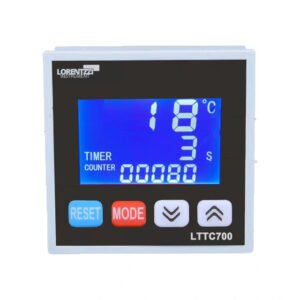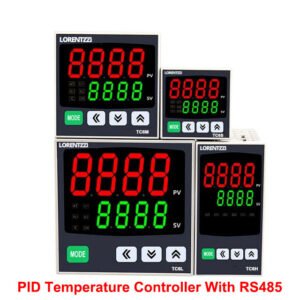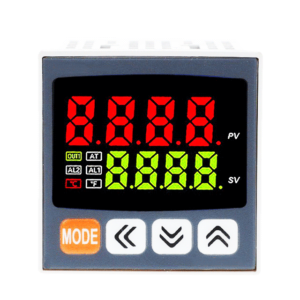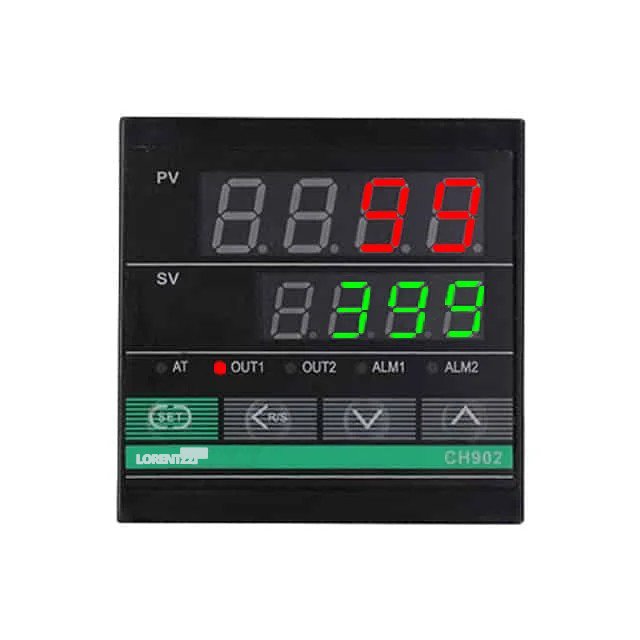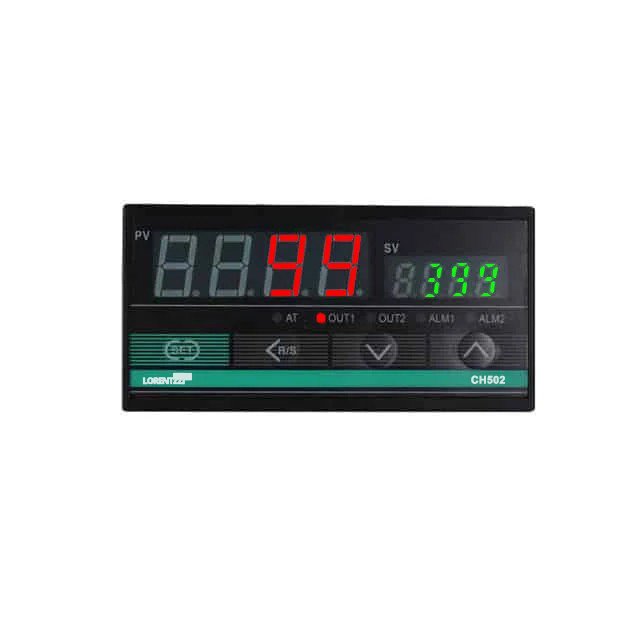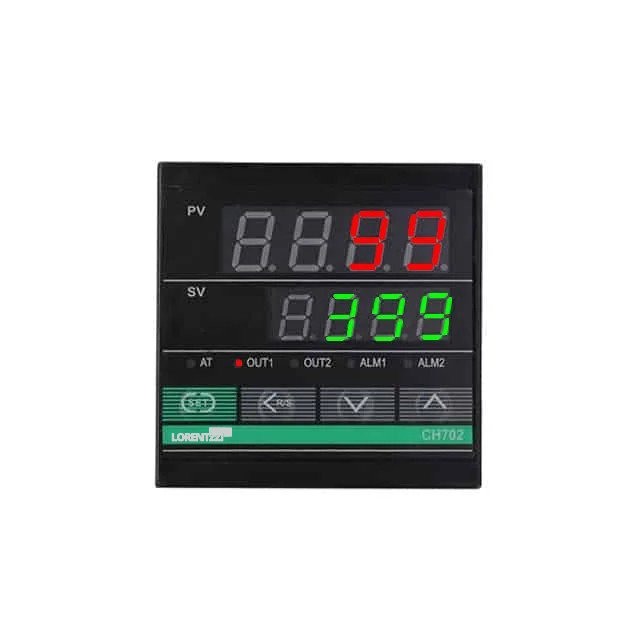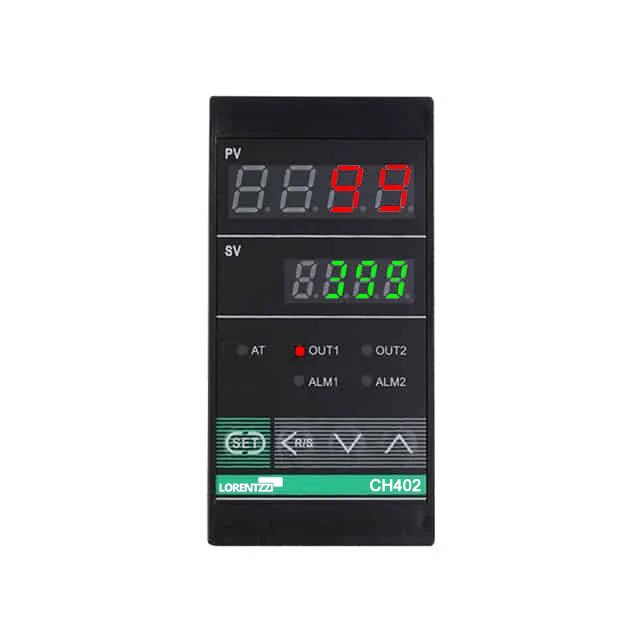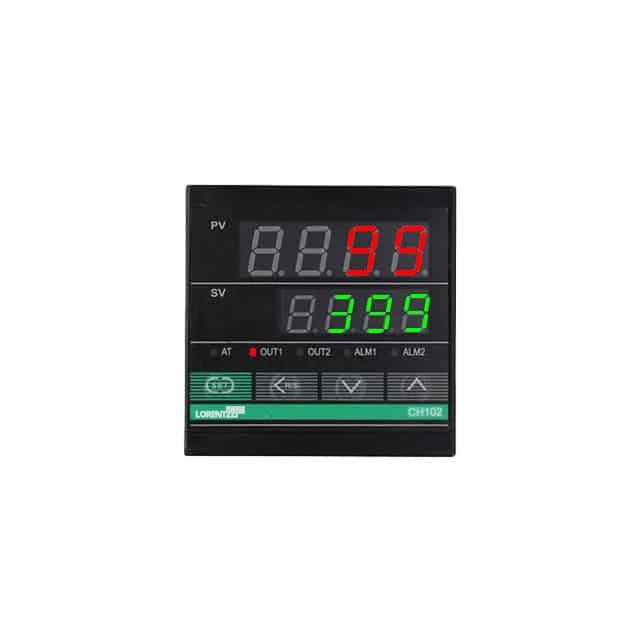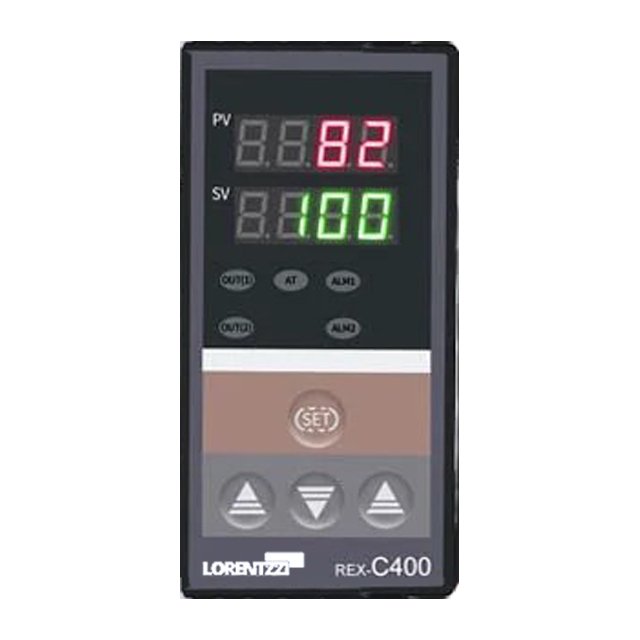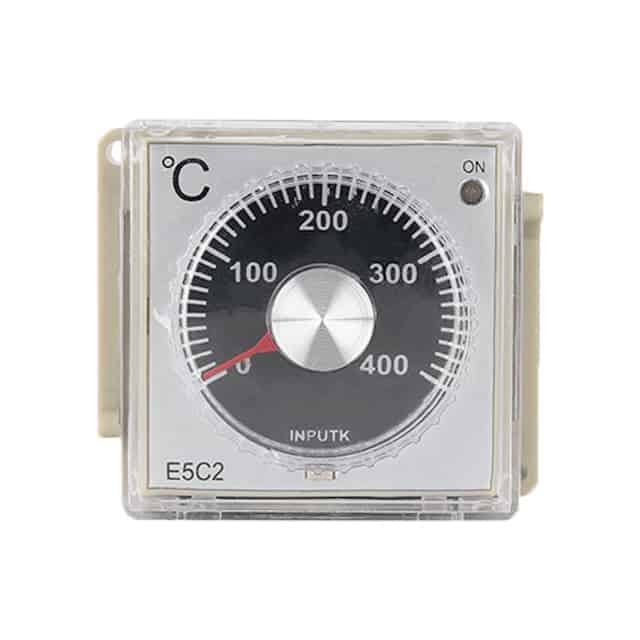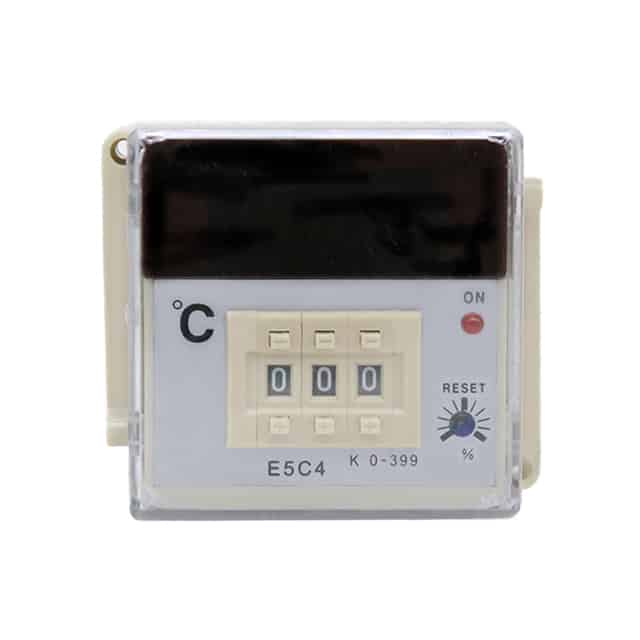
Temperature Controllers
- Leading temperature controller manufacturers
- Excellent quality
- Low minimum order quantity
- Two-year extended warranty.
Our products
Lorentzzi® temperature controller offers versatile solutions tailored to different needs. The cost-effective REX and CH series, equipped with reliable PID control algorthm, are the trusted choice for temperature control systems worldwide. For those seeking premium performance, our TCN4 series delivers exceptional accuracy with ultra-fast 100 ms sampling times, ensuring precise control for your applications. Whether you prioritize affordability or top-tier quality, we provide the perfect solution to meet your requirements.
-
96*96 mm panel size, Multiple inputs, thermocouple&RTD, Outputs SSR+relay available,...
-
72*72 mm panel size, Thermocouple or RTD inputs, PID or...
-
96*48mm panel size, Multiple inputs, thermocouple&RTD, Control method PID or...
-
Panel size 48*96mm, Multiple inputs, thermocouple, RTD, Control mode PID...
-
48*48mm panel size temperature controller, Universal input: TC, RTD or...
Can’t find the product you need? Click the button to contact us!
Our advantages
Fast sampling time
The 500 ms and 100 ms fast sampling time makes our temperature controller control the temperature more accurately.
Multiple inputs
Our temperature controller input can be various kinds of thermocouple, RTD or analog signal, suitable for various scenarios.
International standard size
Our temperature controllers are designed with 4 standard dimensions : 1/16 DIN, 1/8 DIN vertical, 1/8 DIN horizontal and 1/16 DIN.
Easy mounting
All our temperature instruments come with fixing clips to ensure easy panel installation and replacement.
Communication available
Our temperature controller can be equipped with RS485 communication port and standard Modbus RTU protocol.
One-stop solution
We can provide temperature sensor, PID controllers, solid state relay to meet your heating control needs.
Frequently asked questions
Temperature controllers are indispensable tools in both everyday life and industrial automation. They serve dual purposes: as monitoring instruments to display temperature readings and as control devices to achieve precise temperature regulation.
At Lorentzzi®, we offer a comprehensive range of temperature controllers designed to meet diverse application requirements. Our product portfolio includes advanced PID temperature controllers for high-precision applications, as well as straightforward on/off controllers for simpler use cases. Whether your needs are complex or basic, we provide reliable solutions tailored to your specific demands.
What is a temperature controller?
In simple terms, a temperature controller is a device used to maintain the temperature at a desired set point. It does this by constantly comparing the current temperature measured by a temperature sensor to the set temperature, thereby regulating heating or cooling to achieve the set temperature.
How does the temperature controllers work?
The working process of a temperature controller is divided into the following 5 steps:
- Temperature measurement: The temperature controller receives real-time temperature data from a temperature sensor (such as a thermocouple or RTD) placed in the monitored environment or material.
- Comparison with set point: The controller compares the measured temperature with the predefined set point (the desired temperature value). This comparison determines the temperature error, which is the difference between the current temperature and the set point.
- Control algorithm: Based on the temperature error, the controller applies the control algorithm to determine the appropriate action.
- Actuation: The controller sends a signal to the actuator (such as a heater, cooler, or valve) to adjust the heating or cooling output. For example, if the measured temperature is below the set point, the controller may increase the heating power; if it is above the set point, it may reduce the cooling.
- Feedback loop: This process is continuous, and the controller constantly receives updated temperature data, compares it to the set point, and makes adjustments as needed to maintain stable temperature control.
Temperature controllers types
A full temperature control system typically consists of three main components: a temperature sensor, a temperature controller, and an actuator.
Each component plays a distinct role in the system. The temperature sensor measures the ambient or material temperature and sends this data to the temperature controller. The controller acts as the “brain” of the system, analyzing the temperature data and determining when and how the actuator should respond to maintain the desired temperature.
There are two primary types of temperature sensors: thermocouples and resistance temperature detectors (RTDs). Thermocouples, such as types S, R, B, N, K, E, J, and T, are widely used for their simplicity and cost-effectiveness. RTDs, including models like PT100, PT1000, and Cu50, offer higher accuracy and stability, making them suitable for precision applications.
Temperature controllers can be categorized into three types based on their control accuracy: on-off controllers, proportional controllers, and PID controllers. Their precision increases in this order.
On-Off temperature controller:
On-off temperature controller is the simplest type of temperature controller, operating in two states: fully on or fully off. When the measured temperature exceeds the setpoint, the controller turns off completely; when the temperature drops below the setpoint, it turns on fully. This binary operation can result in significant temperature fluctuations and is therefore only suitable for systems that do not require precise control, such as HVAC systems, fridge and freezer, deep fryers, bread bakers, etc.
Proportional temperature controller:
A proportional controller adjusts its output in proportion to the temperature error (the difference between the measured temperature and the setpoint). If the temperature is far from the setpoint, the controller makes larger adjustments; if the temperature is close to the setpoint, it makes smaller adjustments. This proportional response helps maintain the temperature within a narrow range around the desired setpoint, offering better precision than on-off controllers but less than PID controllers.
PID temperature controller
The PID temperature controller is the most precise of the three, leveraging a Proportional-Integral-Derivative algorithm. By continuously calculating the error between the setpoint and the measured temperature, the controller fine-tunes its output to minimize this error. Over time, the measured temperature converges toward the setpoint, achieving optimal stability and accuracy. This advanced control method is ideal for applications requiring high precision and minimal temperature deviation.
Is a thermostat a temperature controller?
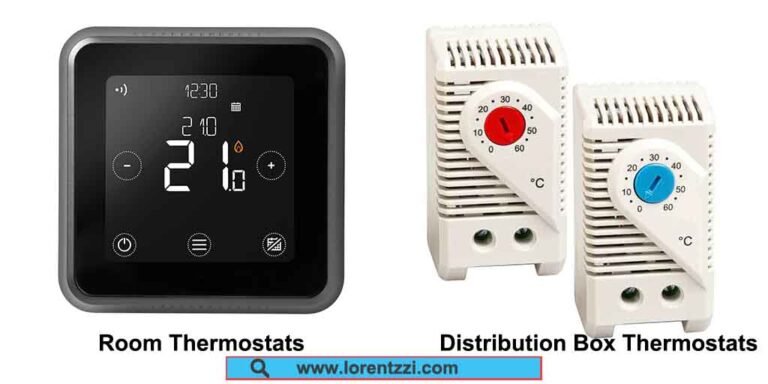
A thermostat is a temperature controller that uses the simple on/off control method described earlier to control temperature, and is mainly used in residential heating and cooling systems, water heaters, fridge, freezer etc.
But in most cases, the temperature controller refers to the PID temperature controller, which can control the temperature more accurately via the PID control algorithm. The PID temperature controller is used more widely in temperature process control fields, such as plastic manufacturing.
In the next section, you can get more usage scenarios of the temperature controllers.
Temperature controllers applications
Temperature controllers are widely used in various industries. Here are some of the main application areas:

Food and Beverage Industry
Temperature controllers are used in pasteurization, fermentation and storage processes to inhibit bacterial growth, maintain product freshness and ensure compliance with food safety standards by accurately maintaining temperature.
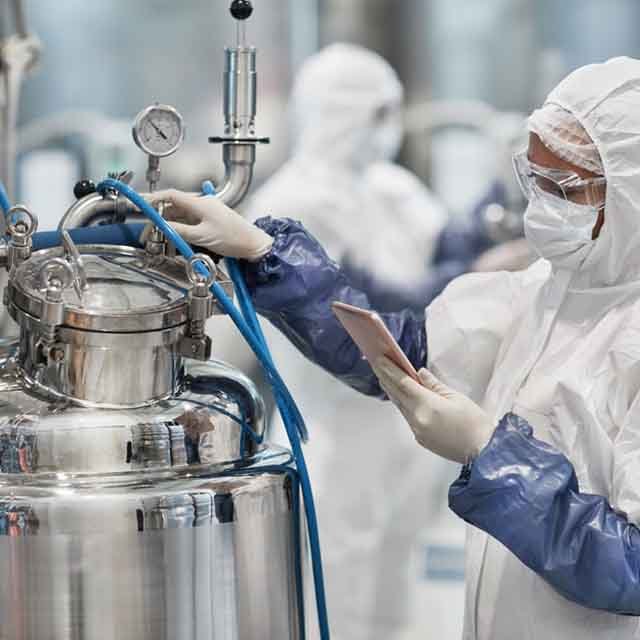
Chemical Industry
During chemical reactions, temperature controllers ensure that the temperature of the reaction system is stable, improving product quality and output while ensuring worker safety.

Manufacturing
In plastic molding, metal processing and electronic manufacturing, temperature controllers are used to control heating and cooling processes to ensure material properties and dimensional accuracy.
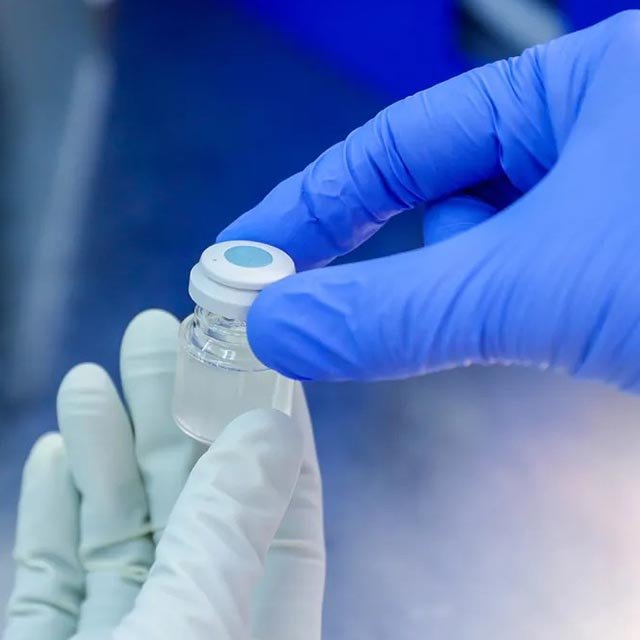
Pharmaceutical Industry
Temperature controllers are critical in the storage and production of drugs and vaccines to ensure their stability and effectiveness while complying with Good Manufacturing Practices (GMP).
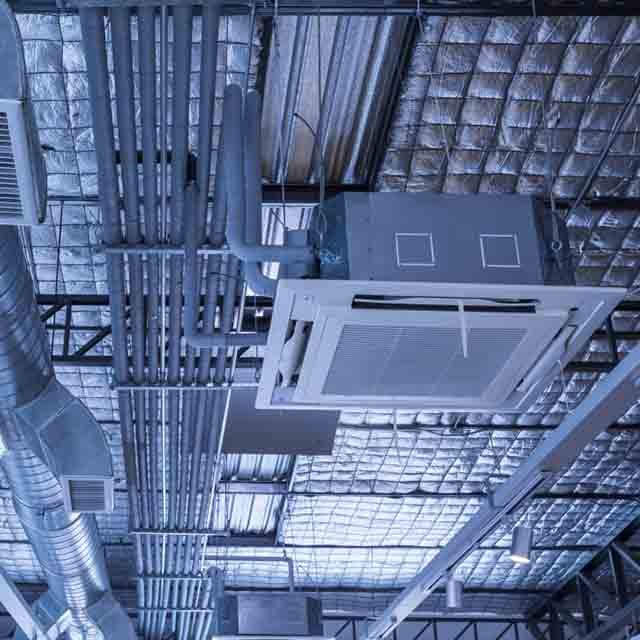
Heating, Ventilation and Air Conditioning Systems (HVAC)
Temperature controllers are used to regulate heating and cooling to maintain consistent indoor temperatures for comfort and energy efficiency.
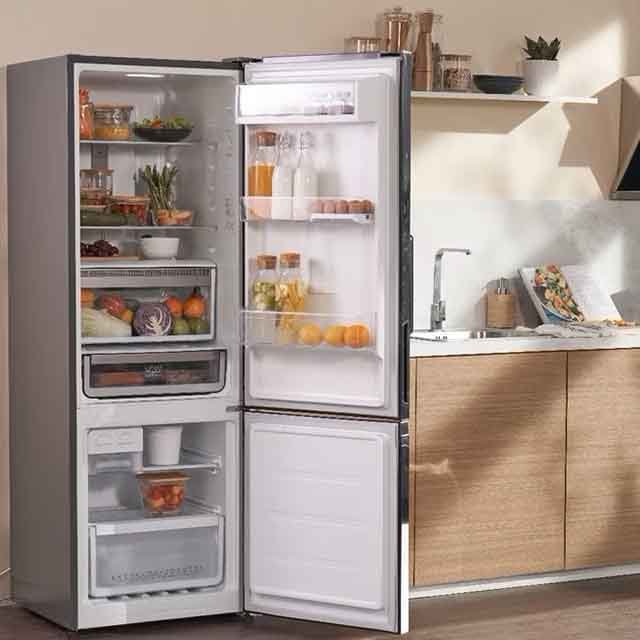
Refrigeration Systems
Temperature controllers are used to preserve perishable items such as food, drugs and chemicals to extend shelf life and meet safety standards.

